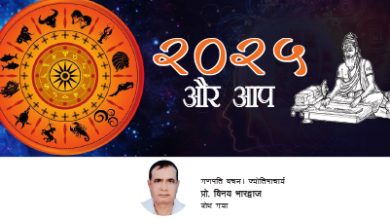
Of late there has been a lot of discussion in print media and social media on form 17C. It all began with the judgment of the Supreme Court on 24th May 2024, which declined Association for Democratic Reforms (ADR)’s request to direct the Election Commission (EC) to upload polling station-wise voter turnout data (Form 17 C) during the ongoing Lok Sabha elections. Café Social tries to deconstruct this issue for the readers to understand and form an informed opinion.
What is Form 17C?
- Form 17C records all the votes polled in a polling station. Under rule 49S (2), the presiding officer has to provide a copy of the data entered in Part I of Form 17C to the candidates’ polling agents at the time of the close of polling.
- The data recorded in Part I of Form 17C includes.
- The unique ID number of the EVM used at a particular polling booth.
- The total number of voters enlisted at that booth.
- The total number of voters who entered the polling booth and whose details were validated on Form 17A.
- The number of voters who did not vote despite signing on the register.
- The number of voters who were not allowed to vote.
- The number of test votes.
- The number of total votes recorded in the EVM.
- Part II of Form 17C is completed by the supervisor of the counting station and necessitates the signature of each candidate or their representative. This section undergoes scrutiny by the Returning Officer. It contains specific data about the following-
- Name of the candidate and votes received.
- If the total votes counted from that booth are the same as the total votes polled (per Part 1).
What makes Form 17C data important
- The data in Form 17C is used by candidates to verify the details provided during counting, such as the ID number of the EVM and the number of votes polled per polling station.
- The candidates can challenge a result if there is a discrepancy between the data in Form 17C and the data emanating from the counting center.
- They can also file petitions in the high court challenging the election result based on the mismatch between the counting data and the figures in Form 17C.
Association of Democratic Reforms (ADR) interim application in the Supreme Court
- The Association of Democratic Reforms (ADR) had filed an interim application in its 2019 PIL seeking directions to the poll panel for the immediate uploading of scanned, legible copies of Form 17C Part-I (Account of Votes Recorded) of all polling stations after the polls.
- The ADR claimed that there was a “5-6 percent” discrepancy between the initial voter turnout data released on the day of polling and the final data published later.
- The NGO argued that the delay in publishing accurate voter turnout data raises concerns about the transparency and integrity of the election process.
EC’s Response
- The Election Commission raised several concerns, including potential chaos and disruption of the electoral process.
- The EC argued that “indiscriminate disclosure” of polling station-wise data could “vitiate” the electoral space and increase the risk of data misuse.
- It stated that there is no legal mandate to provide Form 17C to any person other than the candidate or their agent and that public posting of such data is not provided in the statutory framework.
- EC in its 225-page affidavit submitted to the Supreme Court said-
“It is submitted that a wholesome disclosure of Form 17C is amenable to mischief and vitiation of the entire electoral space. Currently, the original Form 17C is only available in the Strong Room, and a copy only with the polling agents whose signature it bears. Therefore, there is a one-to-one relationship between each Form 17C and its possessor”
Supreme Court’s refusal to the ADR’s plea to upload voter turnout data
- The Supreme Court refused the plea because issuing such a directive during the ongoing election process would be challenging. It noted, “Granting any relief in Interim application (IA) will amount to granting relief in the main petition which is pending.”
- The court emphasized that five phases of polling had already concluded, and mobilizing the necessary manpower for this task would be difficult.
- The Supreme Court has adjourned the interlocutory application filed by ADR to be listed before a regular bench after the elections.
- This means the matter will be revisited once the election process is complete, allowing for a more detailed examination of the issues raised by the ADR.







